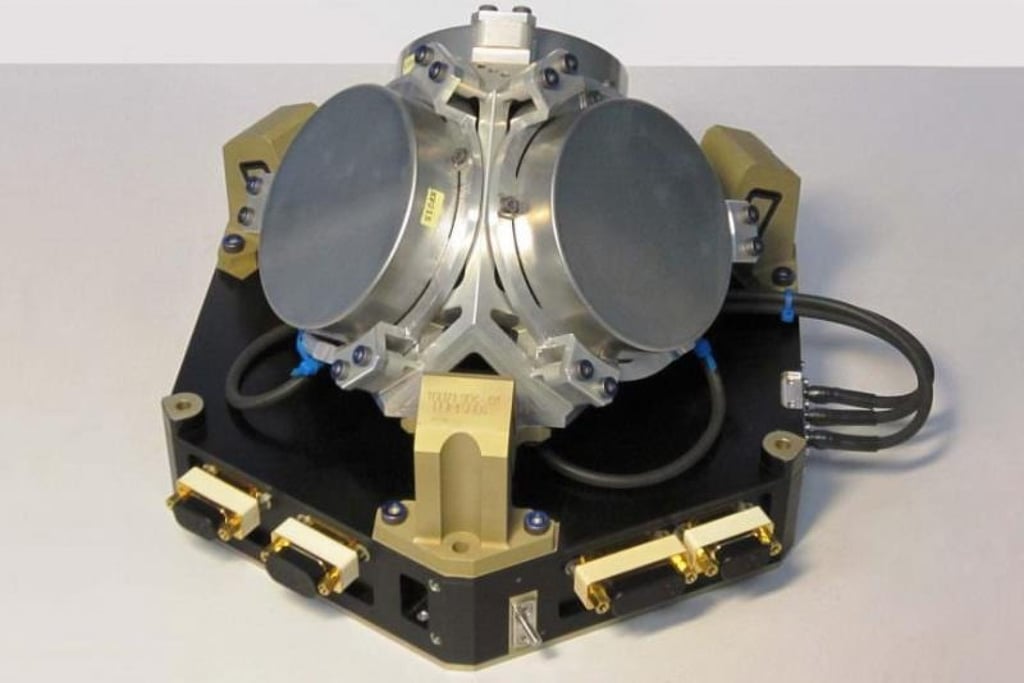Chinese researchers say they have developed a “groundbreaking” fibre-optic gyroscope that is stable across a large temperature range and can be used for navigation.
According to the team from the Tianjin Navigation Instruments Research Institute and Jinan University, the gyroscope could offer a more stable way to measure navigation for aircraft, ships and oil rigs.
Gyroscopes are devices that can sense orientation and the rate at which a moving object is turning, so they play an important role in inertial navigation systems.
Those navigation systems allow for the measurement of vehicles without the need for external signals like satellites. That makes them immune to interference, which is vital for military and security applications.
Due to their simple structure and high resolution, a common type – known as an interferometric fibre-optic gyroscope, or IFOG – has been used in both military and civilian settings ranging from aerospace to weapons systems, oil platforms and autonomous vehicles.

But progress on IFOGs has been limited due to the physical attributes of the fibres, which prompted the research team to develop a new gyroscope that uses hollow optical fibres.
“We present a groundbreaking navigation-grade interferometric air-core fibre-optic gyroscope,” the researchers wrote in a paper published in peer-reviewed journal Nature Communications last month.
They said it was “the first instance of navigation-grade performance in air-core [fibre-optic gyroscopes]”.
“We have achieved the world record measurement accuracy in air-core fibre gyroscopes, entered the ranks of ‘high-precision fibre gyroscopes’, and pointed out the direction for further optimisation,” said corresponding author Ding Wei, a professor at the Jinan University College of Physics & Optoelectronic Engineering.
Conventional fibre-optic gyroscopes use solid-core fibres, whose physical properties mean they are susceptible to operational issues caused by environmental factors – things like temperature, radiation and magnetic fields.
To reduce the impact of these factors, solid-core gyroscopes need to be equipped with bulky components for protection. But doing so increases the cost, energy consumption and space needed to place these gyroscopes into vehicles like submarines, spacecraft and drilling rigs, according to Ding.
Solid-core gyroscopes have reached the limit of engineering optimisation, so researchers have been trying to develop new designs that can improve performance.
Scientists first proposed using hollow or air-core fibres to do this back in 2006.
These gyroscopes have lower temperature sensitivity, a weaker response to magnetic fields, and are more resistant to radiation, “making them more suitable for use in challenging environments”, Ding said.
But there had been doubts over whether this was achievable since no one had “truly” developed a high-precision air-core model since they were proposed.
Ding’s team took on the challenge. They said their air-core gyroscope had reduced thermal sensitivity – by about 10 times what it was in the solid-core gyroscopes.
They expected the gyroscope to become even more stable as the design was improved.
But Ding said it had not yet beaten traditional solid-core gyroscopes on measurement accuracy.
“These results represent a significant step towards [the] long-standing promise of high-precision inertial navigation applications with superior environmental adaptability,” the researchers said.












